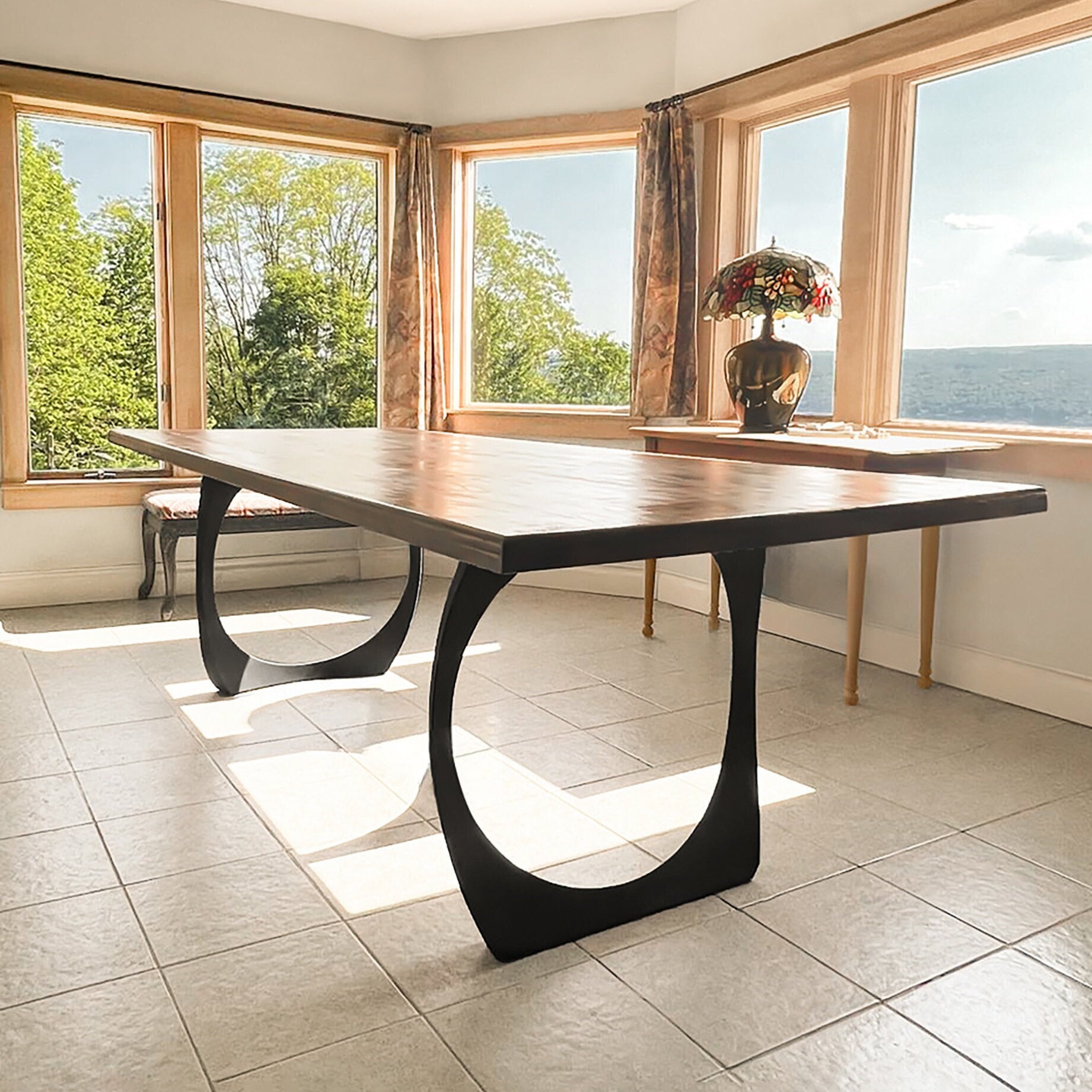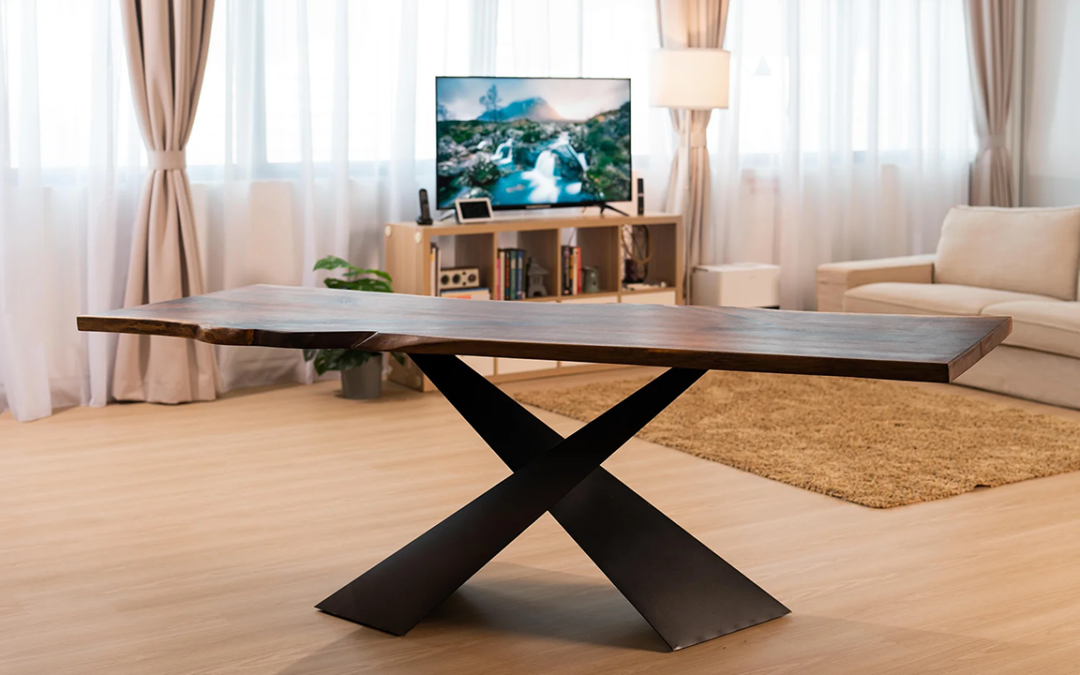Leading Patterns in Dining Room Table Legs to Boost Your Dining Area
Leading Patterns in Dining Room Table Legs to Boost Your Dining Area
Blog Article
Choosing the Perfect Dining Table: What Styles Work Best for Your Home?
Choosing the excellent dining table for your home can be a nuanced procedure that stabilizes appearances and performance. To navigate these choices effectively and discover a table that truly complements your home, take into consideration the adhering to elements in information.
Examining Your Space
Reviewing the dimensions and layout of your dining location is a crucial very first step in choosing the perfect dining table. Begin by measuring the size and size of the room, representing entrances, windows, and other building attributes that could affect table positioning. This makes sure that your table not just fits however additionally enables comfy motion around it.
Take into consideration the variety of people you typically amuse. A table should suit your home's day-to-day needs while offering adequate versatility for periodic guests. Generally of thumb, allot at the very least 24 inches of table size per person to guarantee a comfy eating experience.
It's additionally vital to preserve proper clearance around the table. Preferably, there need to be at least 36 inches in between the table side and walls or various other furniture, allowing simple access and motion. For areas where chairs with arms or added storage space units like buffets are entailed, enhancing this clearance to 48 inches is suggested.
Lighting and ambience play considerable functions also. Make certain that your table aligns with existing lighting fixtures or prepare for adequate illumination remedies. This detailed spatial analysis assurances that your table not just fits physically but additionally harmonizes with your area's general functionality and visual.
Popular Table Styles

Traditional table usually feature ornate information, rounded legs, and abundant timber surfaces, evoking a feeling of classic elegance. They are best for homes with timeless decor or those wanting to include a touch of class to their dining location.
Modern dining tables prioritize simpleness and tidy lines, frequently including materials like glass and metal. These tables are perfect for modern areas, providing a sleek and uncluttered appearance that enhances minimalist layout ideologies.
Rustic table, on the various other hand, emphasize all-natural materials and a handmade look - dining room table legs. They frequently include redeemed wood and a distressed coating, creating a cozy and inviting environment. These tables work well in farmhouse-style homes or those seeking a relaxing, natural feeling
Industrial dining tables combine resources such as metal and timber, usually showcasing a practical visual. This design is fit for loft spaces or urban spaces, adding a touch of sturdy appeal you can try these out and sturdiness to the eating experience.
Each design supplies unique benefits, making it important to pick one that lines up with your home's overall layout and your individual preferences.
Material Selections
When selecting a table, the option of product plays an essential duty in identifying both the table's aesthetic appeals and functionality. Wood, steel, glass, and composite materials each offer unique benefits and difficulties, making it essential to straighten the product with your home's decoration and lifestyle needs.
Timber is a classic and functional alternative, available in ranges such as oak, walnut, and mahogany. Understood for its sturdiness and warmth, wood matches both conventional and modern interiors. However, it calls for regular maintenance to protect against scrapes and warping.
Metal tables, frequently crafted from stainless steel, light weight aluminum, or functioned iron, are praised for their contemporary appeal and toughness. They are particularly suited for industrial or minimal setups yet can be prone to damages and may feel cool to the touch.
Glass dining tables bring an air of elegance and visibility, ideal for smaller areas as they create an illusion of more area. While very easy to clean, glass can be susceptible to smudges and needs cautious taking care of to prevent chips and fractures.
Composite materials, such as MDF and plywood, deal cost-effective and personalized remedies, though they might do not have the longevity of natural materials. Choosing the best product ensures your table is both a practical property and a visual pleasure.
Sizes And Shape Considerations
After figuring out the proper material for your eating table, the following factor to consider is choosing the right sizes and shape to match your area. The form of the table significantly influences the area's aesthetic and performance. click this site Rectangular tables, the most typical form, are optimal for bigger rooms and can accommodate a higher variety of guests. They additionally enable for a much more formal dining experience. Alternatively, round tables foster a sense of affection and are excellent for smaller sized dining locations, encouraging discussion by removing corners and making everybody feel just as included.
As a guideline of thumb, allocate at the very least 24 inches of table width per individual to make certain comfy eating. find here Furthermore, think about the table's clearance room: there must be at least 36 inches between the table side and the walls or various other furnishings. Extending tables use flexibility if you often hold larger gatherings, supplying added seats when required without inhabiting added room daily.
Matching Your Decor
Selecting a dining table that integrates with your existing decoration is essential in producing a natural and inviting area. A sleek, minimal table with tidy lines is excellent for a modern home, while a vintage, luxuriant table fits a more traditional setting.
Shade and material are equally substantial. If your decor includes cozy tones and all-natural products, consider a wood table to enhance the natural feel. On the other hand, a glass or steel table may be better suited in a space dominated by trendy shades and commercial elements. Take notice of the surface, as it must mirror other furnishings and fixtures to maintain consistency.
A rough-hewn, reclaimed wood table can include character to a rustic room, while a sleek marble surface can raise an elegant dining location. A well-matched dining table not just enhances aesthetic appeal however also improves the total dining experience.

Conclusion
Choosing the ideal eating table necessitates mindful consideration of room, style, materials, form, and size (dining room table legs). Conventional tables complement traditional interiors with abundant wood finishes, while contemporary tables match modern settings via glass and metal. Rustic styles introduce warmth through natural materials, and industrial styles improve urban settings with raw components. Balancing the table with existing decor ensures both capability and visual appeal, adding to a cohesive and cosmetically pleasing eating location.
Report this page